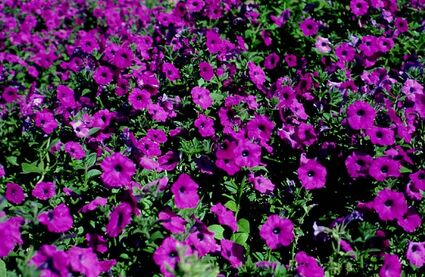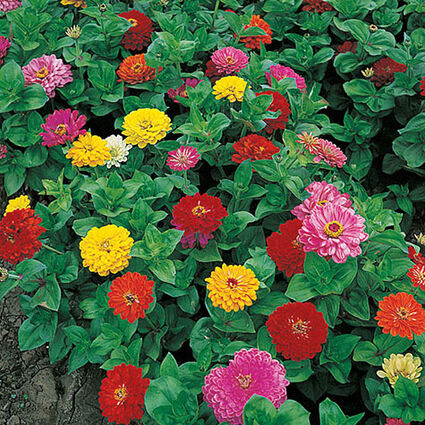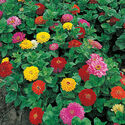Summer Flowers for Texas Gardens
Last updated 6/28/2022 at 4:06pm
Spring's now past, a pleasant but hazy memory with summer officially arriving June 21st. So, for the next several months, summer will be keeping us company. This means we can count on a long, hot season for the next several months. Intense sun light and high temperatures have now faded most of our spring flowers, and now is a great time to add color into our gardens for the remainder of the summer here in Southeast Texas. There are numerous flowers which can handle our hot and humid summers, even when rain fall is scarce. There are also many annuals (plants which have only one growing season) and perennials (plants which have two or more growing seasons) that can be grown in our climate.
Petunias – are one of the longest flowering annuals, blooming from spring well into fall and sometimes last throughout our mild winters. To keep them blooming, deadhead them continually by removing spent blooms. Petunias are easily started from seed, but this will take some time before they are ready to provide blooms. If you are like me and don't want to wait, consider purchasing transplants from your favorite garden center, as they will have an assortment of colors. Many local garden centers and nurseries have petunia cultivars (hybrids), such as "Purple Wave" which has a trailing habit and perfect for hanging baskets, in a variety of colors including white, pink, purple, blue and red. For continuous blooms, fertilize them often and ensure adequate moisture is provided without allowing them to dry out completely between watering.
Zinnias – are easy to grow from seed and provide color throughout the summer. They are extremely reliable bloomers that come in a variety of sizes and colors. From compact miniature plants to tall cutting sizes in colors of pink, red, purple, orange, yellow, lavender, white and green, to name but a few. There are 4 types of Zinnias, and each type depends on the rows of petals in a flower.
• Single Flowered – a single row of petals
• Semi-Doubled Flowered – several rows of petals
• Fully Double Flowered – several petal rows, center not visible, its hidden by the petals
• Cactus Flowered – petal rolls toward the underside, petals twist to form a unique flower
Gaillardia – is a terrific summer-flowering plant which blooms all season. It comes in bright colors of yellow and shades of red and orange, and even deep maroon. They continually bloom without deadheading and are perennial which should be divided every 3-5 years.
Coreopsis – is considered by some gardeners as an old-fashioned flower but it remains as one of my favorites. I grow coreopsis as an annul from seeds gathered from the previous year and scatter them into new locations. Grown as an annual, it sometimes will come back year after year from self-seeding. The flowers must be deadheaded and colors range mainly from yellow to orange but is now available in red as well.
Yarrow – is a sun-loving perennial with colors of white, yellow and red. Deadheading keeps them from self-seeding and the foliage will remain green during our mild winters.
Coneflower – is a perennial coming in a multitude of colors. Purple is the most common color with hybrids coming in many other colors. All parts of the Purple Coneflower are used for medicinal properties. Coneflowers are great for cut flowers and attract pollinators. They are easy to grow, capable of blooming for months and are heat and drought tolerant.
Marigolds – are an annual many gardeners', including myself, use in our vegetable gardens for companion planting. There are many varieties from the French type to the African Amazon variety. They are easily grown from seed and bloom all summer. Marigolds are easy to grow and can take the heat with minimum fuss but need deadheading to continually bloom.
Additional summer flowing plants are Rudbeckia, Monarda (Bee balm), Dahlia, Angelonia, and Gaura. Many can be grown from seed except the Angelonia.
If you have specific gardening questions or need more information, contact the Orange County Master Gardeners Helpline: (409) 882-7010 or visit our website: https://txmg.org/orange, Facebook: Orange County Texas Master Gardeners Association or Email: [email protected].



















Reader Comments(0)